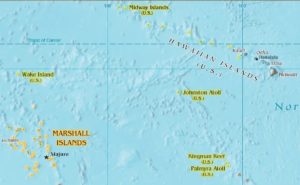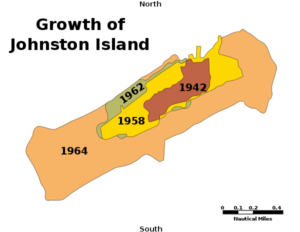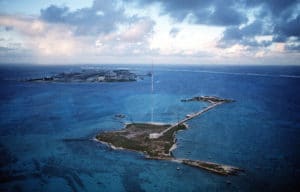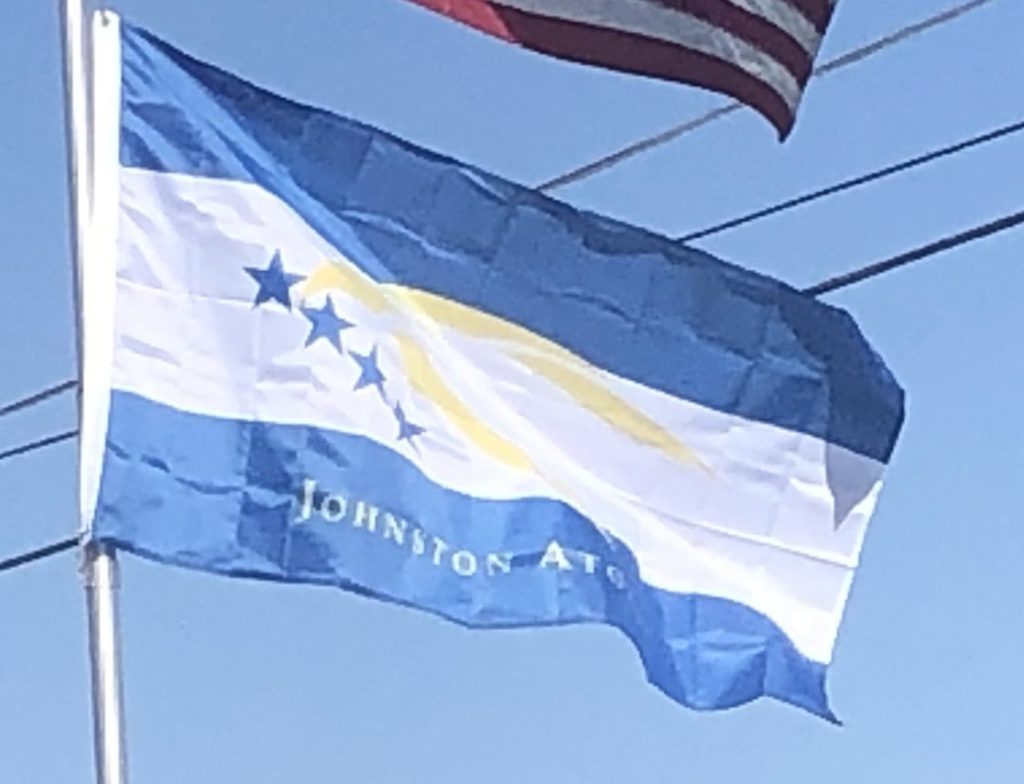Introduction:
Johnston Atoll, also known as Kalama Atoll to Native Hawaiians, is an unincorporated territory of the United States currently administered by the United States Fish and Wildlife Service. Johnston Atoll is a National Wildlife Refuge and is closed to public entry. Limited access for management needs is only by Letter of Authorization from the U.S. Air Force and Special Use Permit from the U.S. Fish and Wildlife Service.
For nearly 70 years, the atoll was under the control of the U.S. military. During that time, it was variously used as a naval refueling depot, an airbase, a nuclear and biological weapons testing site, a secret missile base, and a chemical weapon and Agent Orange storage and disposal site. These activities left the area environmentally contaminated and remediation and monitoring continue.
Geography:
Johnston Atoll is located between the Marshall Islands and the Hawaiian Islands.

The Johnston Atoll is a deserted 3,200 acre atoll in the North Pacific Ocean located about 750 nautical miles southwest of the island of Hawai’i and is grouped as one of the United States Minor Outlying Islands. The atoll, which is located on a coral reef platform, has four islands. Johnston (or Kalama) Island and Sand Island are both enlarged natural features, while Akau (North) and Hikina (East) are two artificial islands formed by coral dredging. By 1964, dredge and fill operations had increased the size of Johnston Island to 596 acres from its original 46 acres, also increased Sand Island from 10 to 22 acres, and added two new islands, North and East, of 25 and 18 acres.

The four islands compose a total land area of 1.03 square miles. Due to the atoll’s tilt, much of the reef on the southeast portion has subsided. But even though it does not have an encircling reef crest, the reef crest on the northwest portion of the atoll does provide for a shallow lagoon, with depths ranging from 9.8–32.8. The climate is tropical but generally dry. Northeast trade winds are consistent and there is little seasonal temperature variation. With elevation ranging from sea level to 16 feet at Summit Peak, the islands contain some low-growing vegetation and palm trees on mostly flat terrain and no natural fresh water resources.
History:
Early History:
The first Western record of the atoll was on September 2, 1796, when the Boston-based American brig Sally accidentally grounded on a shoal near the islands. The ship’s captain, Joseph Pierpont, published his experience in several American newspapers the following year giving an accurate position of Johnston and Sand Island along with part of the reef.

However, he did not name or lay claim to the area, which the local tribes referred to as “iwi poʻo mokupuni”. The islands were not officially named until Captain Charles J. Johnston of the Royal Naval ship HMS Cornwallis sighted them on December 14, 1807.
The Guano Islands Act, enacted on August 18, 1856, was federal legislation passed by the U.S. Congress that enabled citizens of the U.S. to take possession of islands containing guano deposits. In 1858 William Parker and R. F. Ryan, chartered the schooner Palestine specifically to find Johnston Atoll. They located guano on the atoll in March 1858 and they proceeded to claim the island. By 1858, Johnston Atoll was claimed by both the United States and the Kingdom of Hawaii. In June 1858, Samuel Allen, sailing on the Kalama, tore down the U.S. flag and raised the Hawaiian flag renaming the atoll Kalama. The larger island was renamed Kalama Island, and the nearby smaller island was called Cornwallis.
